New managers bring a sense of optimism because we tend to project our desires onto them.
Regardless of the challenging situations they inherit or the increasing influence of sporting directors and boardroom ideologies, we attribute our hopes and biases to new managers.
Mauricio Pochettino can be seen as an intense coach who excels at nurturing young players and could effectively revitalise Chelsea by removing underperforming players and initiating a new era under Todd Boehly.
On the other hand, it is possible that, since Pochettino struggled to implement his football philosophy in a Paris Saint-Germain squad filled with egos, his successful methods are a thing of the past.
Pochettino may have the ability to navigate difficult relationships and complex transfer windows, rallying the players behind a unified tactical vision.
However, there is also a concern that his emphasis on patience and lack of silverware could lead to his downfall, similar to Graham Potter’s experiences.
Boehly’s aggressive and disruptive approach has added to the existing chaos at the club.
As his one-year anniversary approaches, it’s a moment to reflect on the impact of three different managers, significant investments of £500 million, and the club’s disappointing league position, the lowest since 1996.
While there should be equal measures of pessimism and hope regarding the upcoming Pochettino era, football fandom often defies such balanced perspectives.
Fortunately for the optimists, this tactical analysis indicates that the current Chelsea squad is well-suited to the tactics that Pochettino employed during his time at Tottenham Hotspur.
This analysis suggests that if Pochettino style of play is unable to succeed under Boehly’s ownership, it might be an indication that no one else can either.
Mauricio Pochettino Tactics & Formations
Pochettino draws inspiration from two footballing greats, Marcelo Bielsa and Pep Guardiola, to shape his tactical ideology.
He incorporates Bielsa’s aggressive pressing and high-intensity training, focusing on swarming packs overloading one flank before swiftly switching to the other.
He also emphasises defenders stepping out to confront opponents.
From Guardiola, Pochettino adopts positional play, meticulously instructing players on their positioning and movement within a choreographed pattern of triangles.
The goal is to stifle opposition counter-attacks by maintaining a perfect defensive shape and employing energetic counter-pressing.
Pochettino’s approach involves utilising narrow attacking lines, dynamic full-backs, and fast one-touch football.
These attacking moves are complemented by a range of intricate automatisms — patterns in open play ingrained in the muscle memory through Pochettino’s famously demanding double training sessions.
All of these tactical elements are reinforced by a rigorous fitness regiment and Pochettino’s ability to forge strong relationships with his young and ambitious players.
He is known to eliminate outsiders ruthlessly but fosters intense bonds within his inner circle.
This approach, reminiscent of Bielsa, inspires intelligent footballers to give their all and go to great lengths for him.
During Pochettino’s five-year tenure at Tottenham Hotspur, his tactical approach can be examined by focusing on the three middle seasons, excluding the bedding-in period and the subsequent decline.
In the 2014/15 to 2017/18 seasons, Tottenham displayed a high-octane pressing style, evident in their league rankings for metrics such as PPDA (Passes Per Defensive Action) and high turnovers.
These statistics underscore the influence of Bielsa’s pressing philosophy on Pochettino’s tactics.
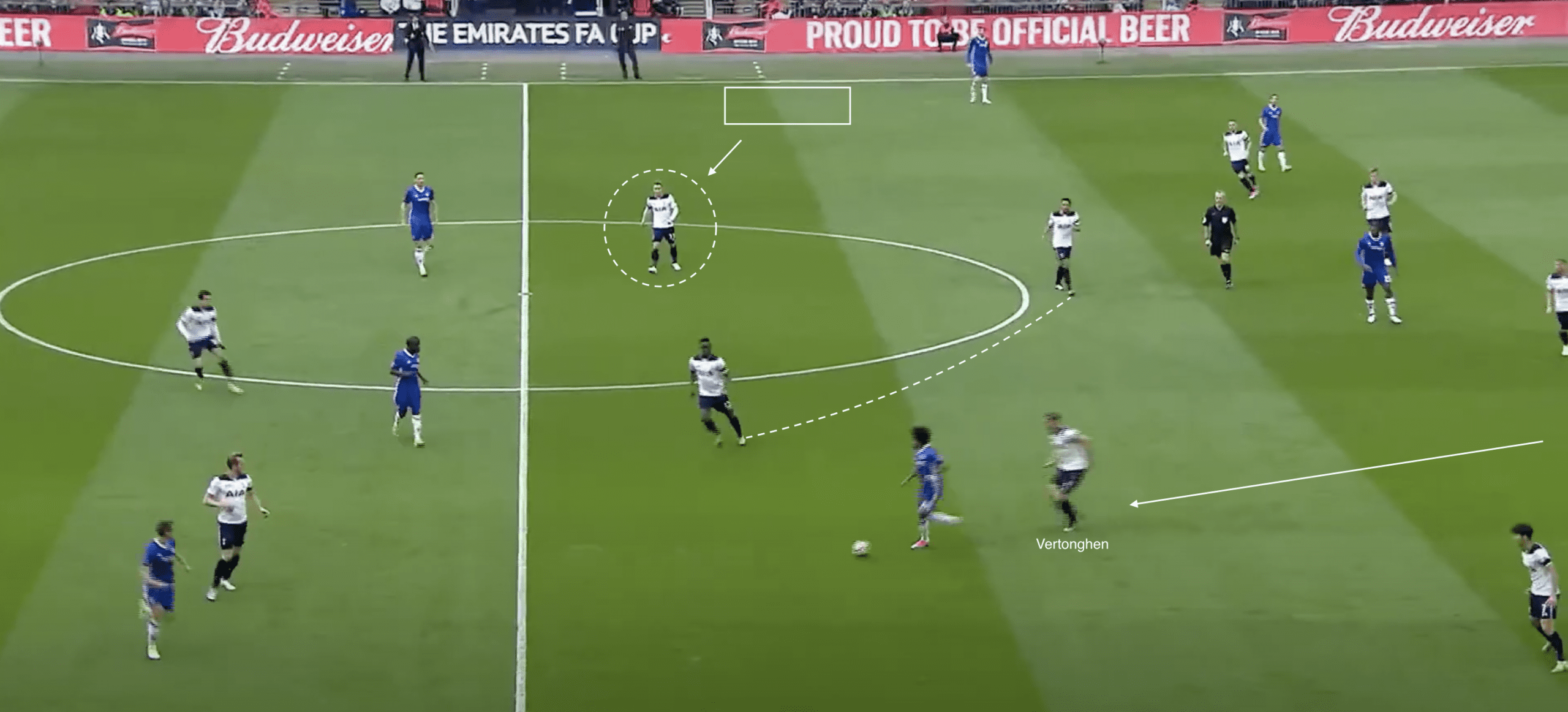
In terms of ball possession, Pochettino’s teams displayed a preference for executing “switches” of play, overloading one side of the pitch before quickly shifting the ball to the opposite flank.
Their combination of strong possession and progressive passes indicated their proactive approach and Pochettino’s aim to integrate Bielsa’s vertical attacking lines with Guardiola’s positional play.
Regarding formations and player involvement, during their peak years, Pochettino primarily utilised a 4-2-3-1 formation that transformed into a 3-4-2-1 when in possession.
This tactical adjustment involved midfielder Eric Dier dropping back to form a back three, allowing the full-backs, Kyle Walker and Danny Rose, to make aggressive forward runs.
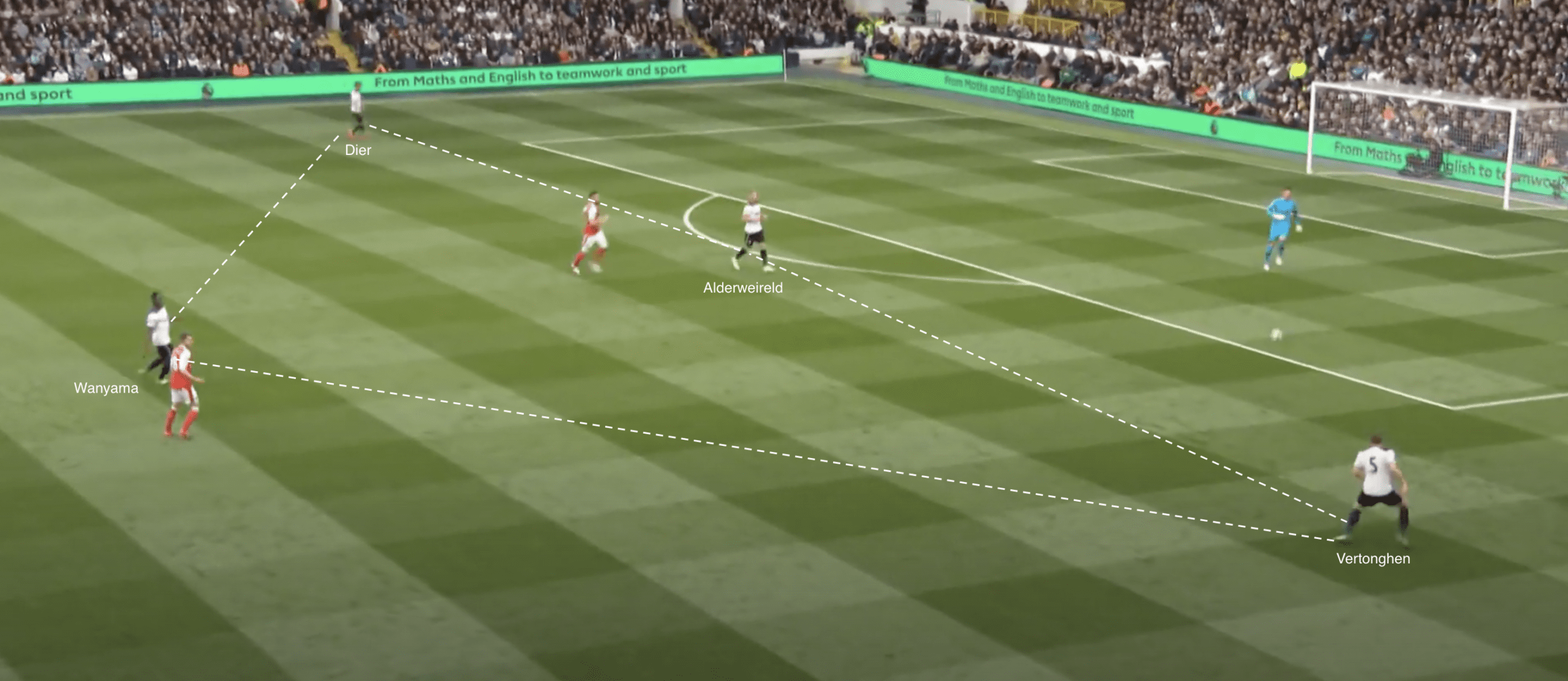
During Pochettino’s tenure at Tottenham, several recurring patterns could be observed.
Moussa Dembélé often showcased his ability to evade the opposition’s pressing as the team’s midfield anchor.
Christian Eriksen played a crucial role as the creative playmaker, while Harry Kane and Dele Alli frequently interchanged positions, with the striker dropping deep.
Additionally, Tottenham’s two wingers provided a balance of skill sets, with one serving as an infield playmaker and the other employing direct dribbling skills.
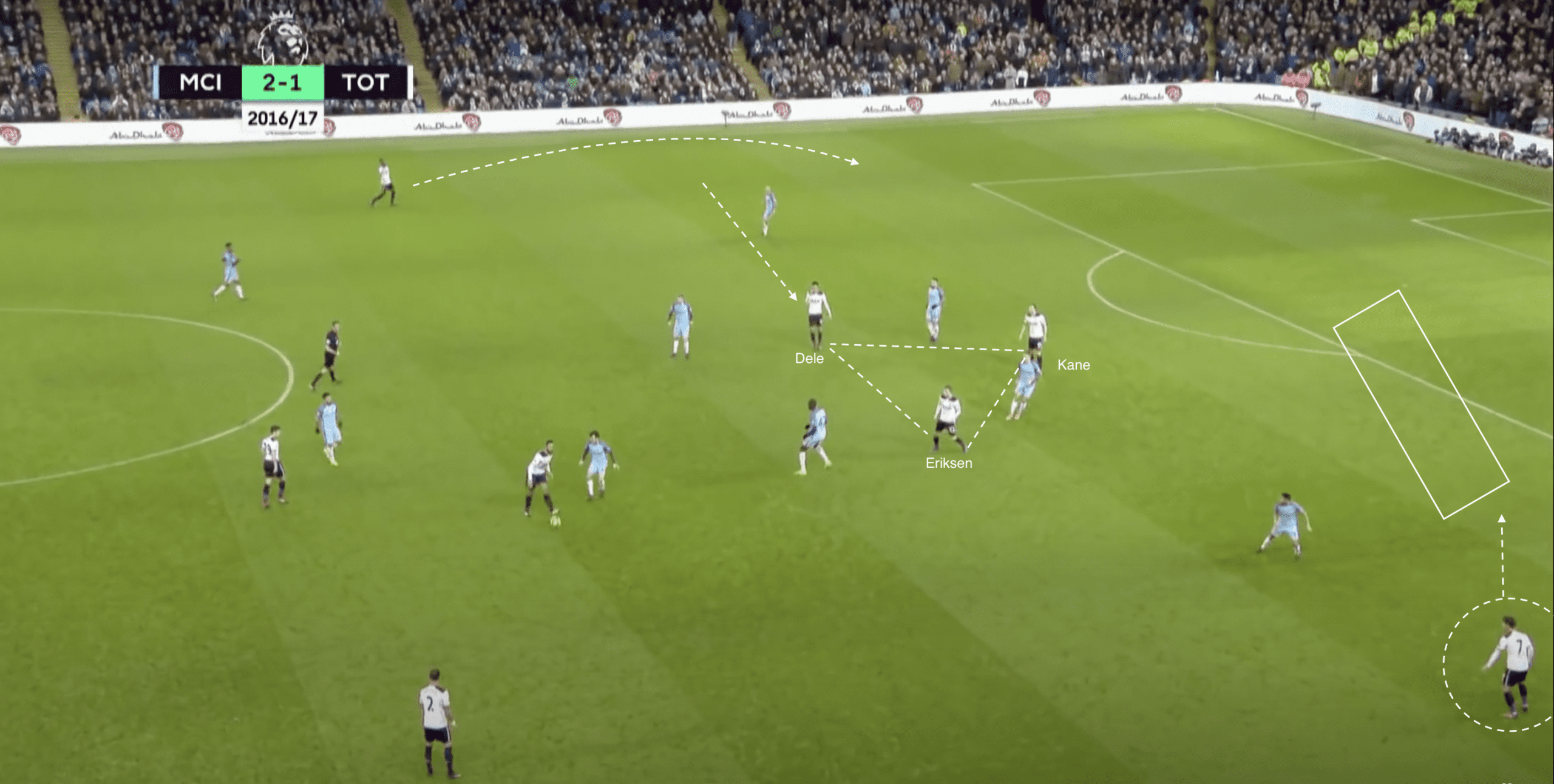
Suitable to Chelsea
Surprisingly, Chelsea align closely with Pochettino’s tactical ideas.
They are fourth in the Premier League in 2022/23 for PPDA (Passes Per Defensive Action) with a score of 9.46, indicating they know how to press aggressively and regain possession in advanced areas. Despite their lower league position, Chelsea rank in the top five for high turnovers and pressed sequences, highlighting their proficiency in pressing and winning the ball.
Furthermore, Chelsea excel in possession-related metrics this season.
They rank within the top five for average possession, progressive passes, and progressive carries.
Despite their perceived chaos, Chelsea’s recruitment strategy has focused on players that align with a consistent technical profile, thanks to the work of their scouting department.
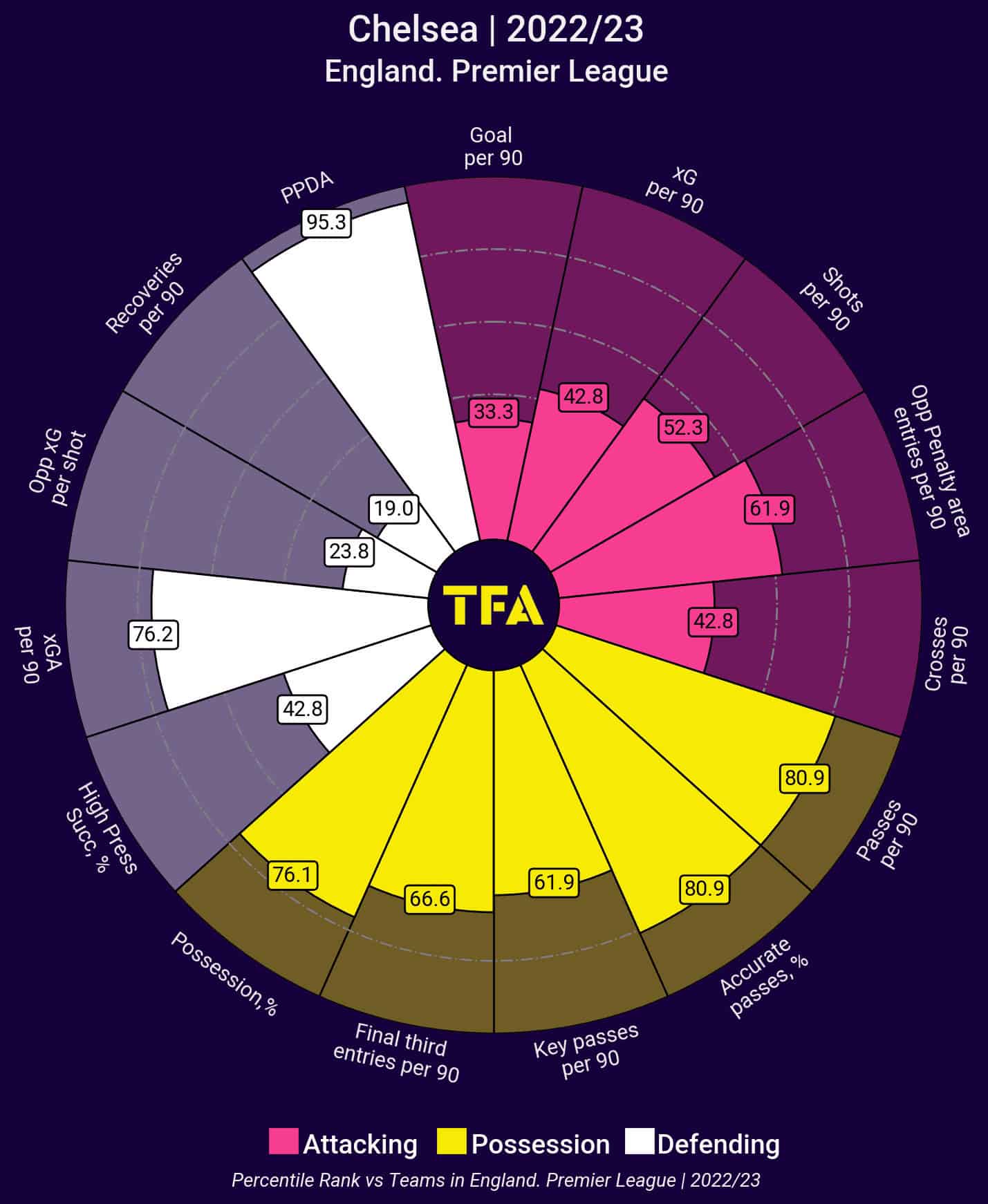
Therefore, the positive news for Chelsea is that their new signings are well-suited to the style of a dynamic attacking coach like Pochettino, who emphasises high-pressing and vertical play.
This contrasts with the patient possession-oriented approach associated with Graham Potter.
Chelsea’s solid foundation and compatibility with Pochettino’s philosophy suggest that he could potentially thrive as their coach.
Chelsea Key Players
Chelsea’s recruitment strategy has focused on signing technical defenders who possess the ability to break lines.
Despite his injury struggles, Wesley Fofana has showcased his talent for carrying the ball out of defence.
He has averaged 12.5 progressive carries per 90 minutes, ranking fourth among all Premier League central defenders.
In fact, Fofana’s performance in this metric places him in the 99th percentile across Europe’s top five leagues in the past year.
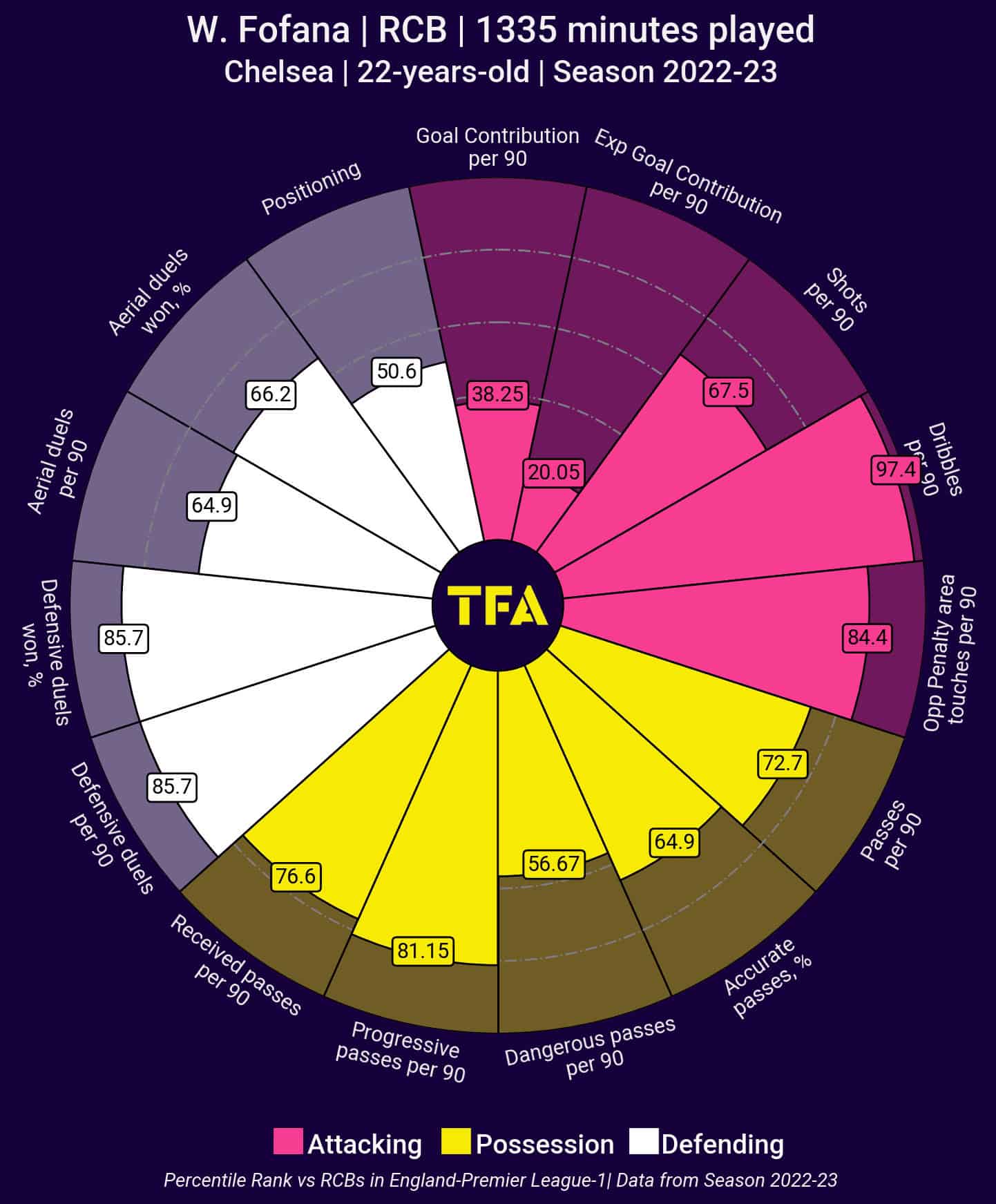
Another promising young centre-back at Chelsea is Benoît Badiashile, who excels in breaking lines with his passing.
Although he hasn’t featured extensively, the Frenchman averages 3.3 progressive passes per 90 minutes, a figure surpassed by only six other central defenders in the Premier League.
The full-back and wing-back positions are also crucial in Chelsea’s setup.
Reece James and Ben Chilwell serve as the modern equivalents of Pochettino’s English pair of Kyle Walker and Danny Rose.
Chilwell ranks in the 88th percentile for expected goals assisted (0.17 per game), demonstrating his attacking prowess.
Meanwhile, James leads in various attacking categories from the wing-back position.

Chelsea’s recruitment has successfully targeted defenders with technical qualities that enable them to split lines.
The likes of Fofana, Badiashile, James, and Chilwell contribute significantly to Chelsea’s attacking threat from defensive positions.
In the midfield, Enzo Fernandez presents himself as an ideal metronomic playmaker who can elevate the role played by Eric Dier.
His 5.6 progressive passes per 90 minutes rank fifth among all Premier League players this season, while his average of 79.4 passes per game is the highest among midfielders.
Fernandez’s defensive contribution is also notable, with his tackles (2.96 per 90) placing him in the 88th percentile and his blocks (1.77 per 90) in the 92nd percentile when compared to midfielders in Europe’s top five leagues.
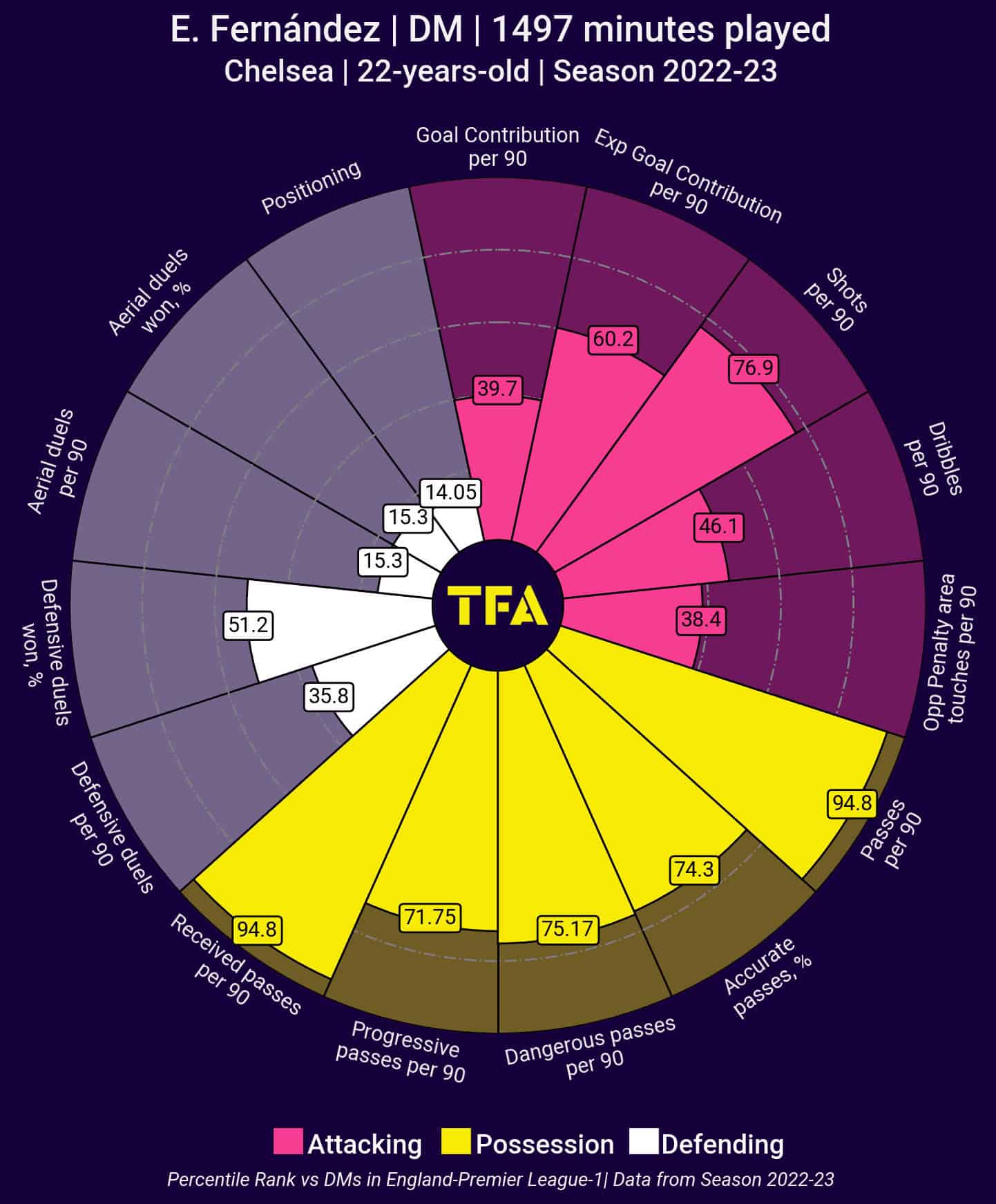
Fernandez’s style aligns with Pochettino’s urgent Argentine approach, making him a fitting addition to the team.
He can be complemented by the dynamic and combative N’Golo Kanté, who exhibits even greater agility in navigating through the opposition’s lines.
Alternatively, the intelligent playmaking abilities of Mason Mount make him an excellent candidate to fill the role of a new Eriksen under Pochettino’s guidance, although the England international may not be at Stamford Bridge next season so perhaps this is an area that needs investment in the summer.
In terms of wide players, Chelsea has primarily focused on acquiring powerful dribblers.
Noni Madueke, despite limited playing time (512 minutes), leads the league in successful take-ons per 90 minutes with an average of 5.0.
Additionally, his 7.5 touches in the opposition box per 90 minutes are the highest among all Chelsea players this season, highlighting his direct dribbling threat.
Raheem Sterling, a more experienced winger, needs no introduction, possessing well-known talents.
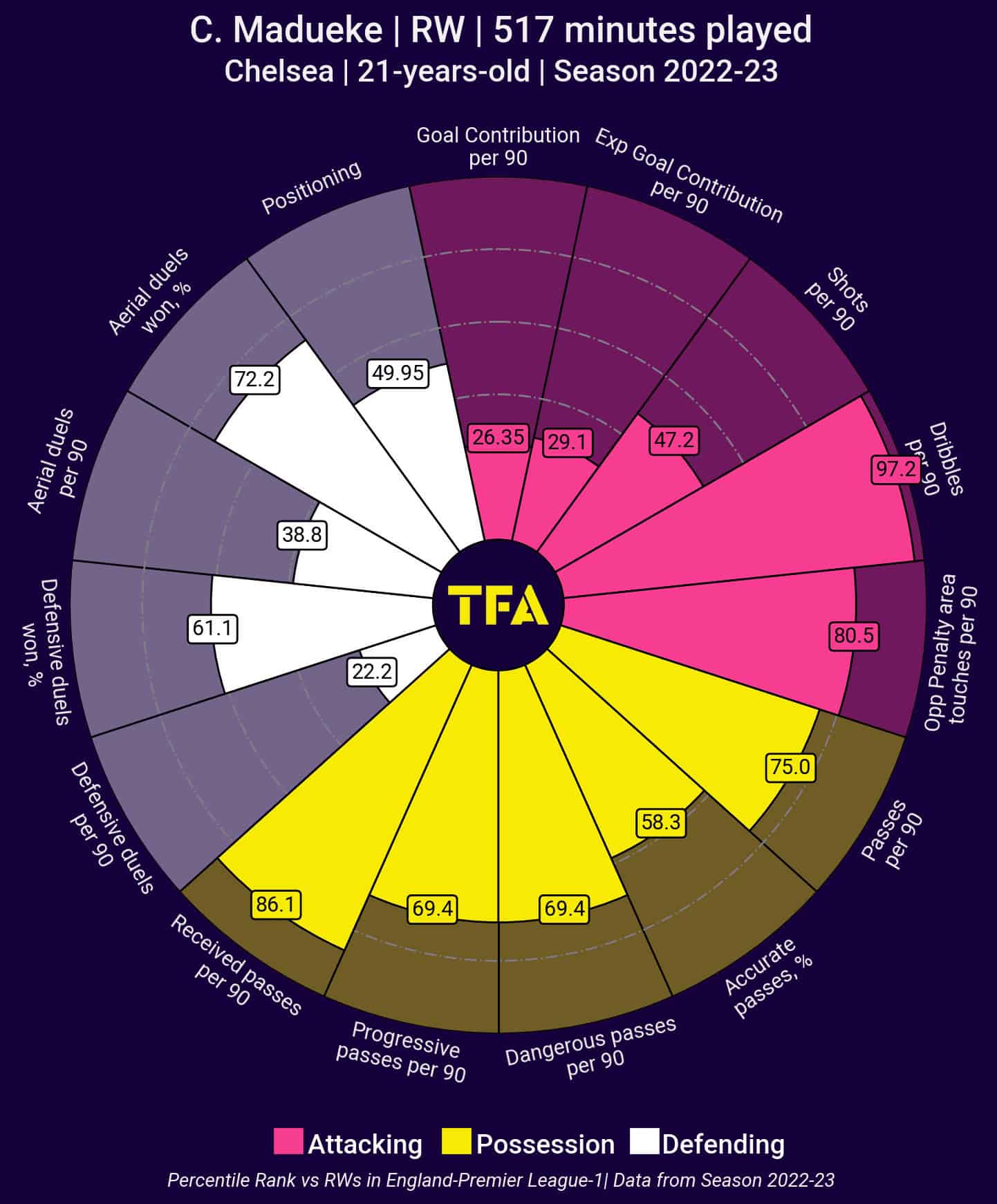
Chelsea’s midfield options boast the metronomic playmaking skills of Enzo Fernandez, the dynamism of N’Golo Kanté, and the intelligent playmaking abilities of Mason Mount.
In the wide positions, the team has secured powerful dribblers in Noni Madueke and the accomplished Raheem Sterling.
Pochettino may seek to incorporate a number ten-like player on the opposite wing, which could be an essential position for Chelsea to upgrade.
However, there are indications that Pochettino sees Mason Mount more as an inverted winger, considering the rumoured interest in Moisés Caicedo and Declan Rice.
While Romelu Lukaku may not perfectly fit the mould of a Harry Kane, pairing him with a floating forward akin to Dele Alli, such as Christopher Nkunku or Kai Havertz, could still work.
Given Chelsea’s need to offload several players in the summer, it’s unlikely Pochettino will have many opportunities to strengthen this area.
Summary
One of the main advantages of having Pochettino as manager is his ability to shape and develop talent on the training field.
With a squad that boasts 14 players aged 24 and under, Chelsea already possesses a depth of youthful talent that Pochettino can mould to his tactical preferences.
Looking ahead to next year, it’s important to acknowledge that a lot has changed in the past five years, and Pochettino tactics unlikely to replicate the exact dynamics of his Tottenham team at Stamford Bridge.
Adaptation and innovation will be key, as seen during his time at PSG, where he had to make adjustments and employ a reactive 4-3-3 formation to accommodate players in unfamiliar positions.





Comments